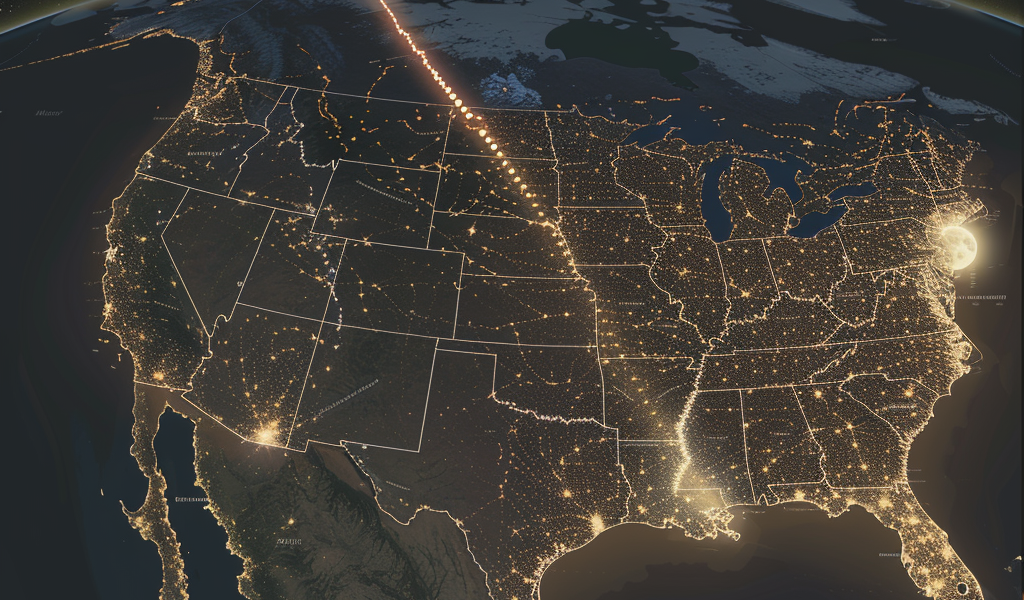The last total solar eclipse in the United States occurred on Monday, Aug. 21, 2017. It was the first visible eclipse in U.S. skies in nearly four decades, captivating eclipse-chasers across the country. The path of totality spanned from Salem, Oregon, to Charleston, South Carolina, making it the first eclipse in 99 years visible across the entire country.
The lunar shadow, cast by the moon on the Earth’s surface as it was back-lit by the sun, entered the U.S. near Lincoln City, Oregon, at 9:05 a.m. local time, reaching totality there at 10:16 a.m. local time, according to NASA. The moon’s shadow swept across all U.S. states, traveling at more than 1,200 miles per hour, with watchers in 14 states getting to experience totality. The darkness of totality hit watchers in Charleston, South Carolina, at 2:48 p.m. local time, and the last of the lunar shadow left the U.S. at 4:09 p.m. ET.

The map above illustrates the path of the moon’s umbral shadow during the total solar eclipse of Aug. 21, 2017, showing the fraction of the sun’s area covered by the moon outside the path of totality. A partial eclipse was visible throughout the United States, providing a memorable celestial event for millions of Americans.





